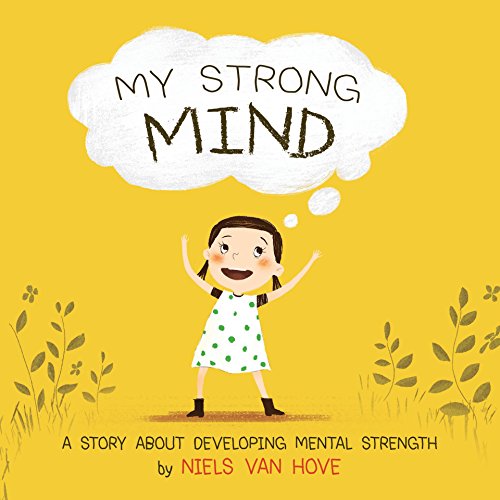SEL Read Aloud: My Strong Mind: A Story About Developing Mental Strength by Neils van Hove

Summary
In “My Strong Mind” by Neils van Hove, some things come easily for Kate, but she can’t help but focus on the things that are hard, such as getting ready for school on time, doing cartwheels with her friends, and speaking in front of her class. They are even harder because Kate ends up making her parents upset or getting teased by her friends, creating a vicious cycle that leaves her feeling grumpy.
After reading a book about “smart minds,” Kate learns several strategies for approaching difficult situations, and the next day she tries them out. She is much more successful as she makes a task list, accepts failure, visualizes success, counts to ten, tries her best, takes slow deep breaths, and shares gratitudes. Things don’t go perfectly, but she feels a greater sense of control and peace.
Comprehension Questions
Six questions aligned to Bloom’s taxonomy for teacher’s to evaluate students’ comprehension
- Remembering: What daily challenges does Kate face?
- Understanding: Describe how Kate’s mindset changes her approach to doing cartwheels.
- Applying: How would Kate’s approach to using a task list help someone be on time for school?
- Analyzing: What is the effect of Kate counting to ten when she’s angry?
- Evaluating: Which of Kate’s strategies for overcoming challenges would work best for you? Why?
- Creating: Imagine a sequel to “My Strong Mind.” Outline a story where Kate teaches a friend to develop their own strong mind.
CASEL Discussion Questions
Five questions aligned to the CASEL competencies for teachers to foster an engaging discussion and foster social-emotional learning
- Self-Awareness: In what ways did acknowledging her fears help Kate overcome them?
- Self-Management: Reflect on a situation where you, like Kate, had to persist through difficulty. What strategies did you use to manage your emotions and keep trying?
- Social Awareness: Kate’s dad listening to her after putting his phone away shows the value of giving undivided attention. Why is this important in understanding others’ needs?
- Relationship Skills: Kate communicating calmly with her friends when they were mean is a key aspect of healthy relationships. Discuss how communication skills are important in resolving conflicts.
- Responsible Decision Making: Discuss how Kate’s decision to try the cartwheels, despite her fear, demonstrates responsible decision-making.
Design Thinking Challenge
Take students’ learning even further by incorporating the Imagineerz design thinking framework
Build a sinful obstacle course
Understand
- After reading “My Strong Mind” by Niels van Hove, discuss with students how Kate used her mental strength to overcome everyday challenges. Explore the concept of mental strength and how one can train their mind to tackle obstacles positively and constructively.
Ideate
- Encourage students to brainstorm ideas for a mindful obstacle course, a series of stations or challenges that represent common obstacles children might face (e.g., fear of failing, dealing with negative emotions, or facing a new challenge). Each station should require participants to use a mental strength skill (e.g., positive self-talk, visualization, breaking tasks into steps) to move to the next challenge.
Prototype
- In groups, students will design and create prototypes of their Mindful Obstacle Course using classroom materials. They might create mini-models of each station with explanations of how it works and what mental strength skill it aims to develop. Encourage them to be creative in representing mental challenges physically and consider how participants will engage with each station.
Test
- Have a class session where each group presents their mindful obstacle course model. Let them explain the purpose of each station, the mental strength skill it represents, and how it helps overcome the obstacle. Invite feedback from peers on how effectively each station encourages the development of mental strength and any suggestions for improvement.
- Wrap up with a reflection on how creating the obstacle course helped them understand the importance of mental strength and the various ways one can develop it. Discuss how they can apply these skills in their own lives when facing difficulties, drawing parallels between the obstacle course challenges and real-life situations.
Read Aloud
If you appreciated getting to read this book with your class, you might also want to share this book with them!
Additional Resources
Copyright Notice
The image on this page comes from the book My Strong Mind by Neils van Hove. Copyright © 2017 by Neils van Hove.


